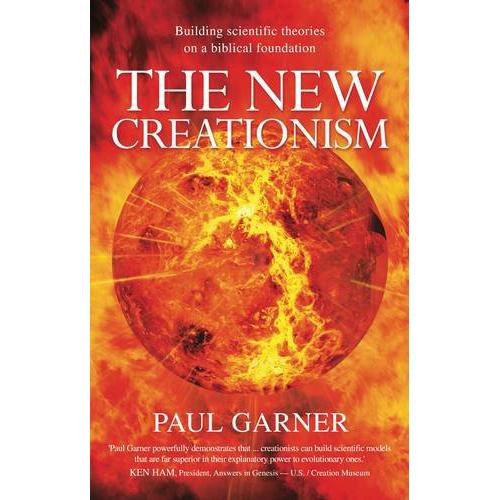The New Creationism: Building Scientific Theories on a Biblical Foundation
Paul Garner. 2009. Evangelical Press USA. ISBN 13: 978-0852346921

Paul Garner. 2009. Evangelical Press USA. ISBN 13: 978-0852346921

As indicated by the subtitle, Building Scientific Theories on a Biblical Foundation, this book aims to establish an understanding of science from a biblical perspective. Each chapter begins by referring to the biblical account of earth history. Biblical information is then applied to scientific issues, with discussions of current creationist thinking and problems in evolutionary theory. The text covers 242 pages, with an additional 58 pages of glossary, voluminous endnotes, and helpful index. The book will be of interest to those who would like to know how many creationists deal with questions about the Bible and science.
Paul Garner, the author, has a MSc in Environmental Sciences from University College London, and is a Fellow of the Geological Society of London. He is affiliated with Biblical Creation Ministries as a researcher and lecturer.
The sixteen chapters of the book are organized into four parts. The first three chapters deal with the creation of the universe and the earth. The author holds the position that Genesis 1:1 applies to creation of the entire universe as opposed to other interpretations such as creation of the solar system or of the biosphere. A chapter is devoted to the origins of the sun, moon and stars. Design is seen in the features of the sun and in the fitness of the earth for life.
The age of the earth is addressed in four chapters, starting with the literal meaning of “day” in Genesis 1, and brief reference to the significance of the seventh day of creation. Chapter five identifies issues in sedimentology, both those that suggest short chronology and those that suggest long chronology. More research is needed on this topic. In chapter 6, Garner notes that there seems to be a systematic bias in radiometric dating methods – longer ages seem to be produced by isotopes with longer half-lives or with alpha decay. Several problems with long chronology are identified, including the rate of recession of the moon, rates of continental erosion, and carbon-14 in fossils and diamonds
Chapters 8-12 address issues relating to the origin and diversity of life. Creation remains the only viable explanation for the origin of life. God created diversity in the beginning, and gave created species the ability to change to adapt to changing environments. Some features of organisms form a pattern of groups within groups, while other features are unique to specific groups or are shared in unpredictable ways. Creationists may explain similarities in organisms as necessary for survival or due to common design. Sin brought curses that radically changed the creation, bringing death and degeneration, disease and violence. Studies of embryological development have revealed significant challenges to evolutionary expectations. Degeneration is part of creation theory, so vestigial organs are consistent with creation. However, many claims of vestigial organs have been shown to be wrong.
The final four chapters deal with the global flood and the post-flood world. Catastrophic plate tectonics theory (CPT) provides a creationist explanation for the relation of the flood and geology. Fossils that could be interpreted as evolutionary transitions are so rare they bring the theory into doubt. Sequential burial of habitats by a rising sea might explain why fossils occur in a sequence that starts with marine habitats and extends upward to include land habitats. Much of the fossil record appears to have been preserved by rapid burial. CPT can also explain the Ice Age. Heat generated by plate tectonics would heat the oceans, increasing evaporation. Volcanic dust would block the sunlight and cool the continents, increasing precipitation in eastern North America and eastern Asia. Postflood humans were dispersed from Babel by confusion of languages. Small groups would travel to different places, establishing small populations that could develop distinctive physical traits now interpreted as different species of the genus Homo. Survival would require focus on hunting and gathering and use of stone tools. Fossils of Australopithecus and similar types seem to represent extinct apes that may have lived in an area before humans dispersed there from Babel.
In an epilogue, Garner appeals to readers to consider the necessity of Genesis for understanding human history and human nature, and the gospel.
Reviewed by
Jim Gibson, PhD